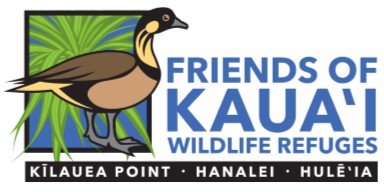Feral Cats Harm Our Wildlife
It is estimated that there are 25,000 feral cats on the Island of Kauaʻi. This staggering number of free-roaming cats pose a significant risk to our ground-nesting seabirds and waterbirds. Friends of Kauaʻi Wildlife Refuges is working with wildlife conservation partners, elected officials and concerned citizens to support a goal of zero free roaming cats across our island. We support comprehensive efforts to approach this complicated and sensitive issue. There are many steps needed, with multiple approaches. Please help educate yourself about this important challenge facing our wildlife.
Many of us love cats. However, it is important to note that a domesticated cat in a home is a pet. Whereas a feral cat roaming the island is an invasive predator that will continue to hunt and feed on endangered wildlife for up to 15 years. It has been documented that even those that are fed by well-meaning community members will continue to instinctively hunt, dispelling the idea that feeding feral cats eliminates their hunting activities. In fact, feeding feral cats can increase their capacity to reproduce and create even stronger predators.
Allowing cats to roam freely across our island is inconsistent with the delicate balance of our ecosystem and pose significant threats to our native wildlife and humans as well.
There are only about 1,000 genetically pure koloa and roughly the same number of ʻalae ʻula left in the entire world – and they depend upon Hanalei NWR to provide a safe place to live, nest, feed and thrive. Despite the vigilant work of our Refuge team members, feral cats – many of which are fed by community members – travel down from Princeville into Hanalei NWR and kill endangered birds. 63 cats were trapped in Hanalei NWR last year, representing a fraction of the number of cats that actually traveled across the refuge and predated upon our wildlife.
Humans brought these predators to Kauaʻi, an island that is home to ground nesting birds that evolved with no means to protect themselves against the attacks of feral cats, dogs and pigs. It is up to us to help solve this problem.
Many people look to TNR (trap, neuter, release) as the primary solution, largely because representatives of the pet food industry have put forward this idea, one which also supports increased sales of their products. However, in order for TNR to be an effective means of population control, you have to spay and neuter at least 75% of the population EVERY YEAR just to keep the population numbers stable – and even higher rates to actually reduce or eliminate the population size over time. Well-meaning efforts here on Kauaʻi at best reach 250-500 cats per year and is not nearly enough to truly help protect our native ground nesting birds.
PETA (People for the Ethical Treatment of Animals) is a respected partner in the conservation world. Many look to them for guidance regarding challenging issues faced in communities across the country. PETA is completely against the abandonment of cats. We have two position statements from PETA (TNR 1, TNR 2) that outline their position against TNR posted on the Advocacy page of our website. We invite you to take a few minutes to learn more and help educate other members of our community.
We do not support:
the abandonment of pets
supporting feral cat colonies and feeding feral cats, which pose a significant threat to endangered wildlife and humans alike
We do support:
indoor cats as pets and valued members of a household
“catios” that provide outdoor experiences for cats
the development of cat sanctuaries to provide a safe place for feral cats that cannot be adopted
working with a trusted partner to safely and humanely trap and remove feral cats
Other important thoughts:
Free-roaming cats are a vector for toxoplasmosis, which can cause miscarriage, birth defects and can be fatal.
Toxoplasmosis is also deadly to Hawaiian monk seals, which become infected due to runoff from the waste that collects within cat colonies located near the ocean and streams.
Feral cats often live a truly miserable existence in a feral colony, where fighting, hunger and disease are prevalent. If you care about cats, please don’t abandon a pet or allow them to roam freely without care.
Photo Credit: Hob Osterlund


